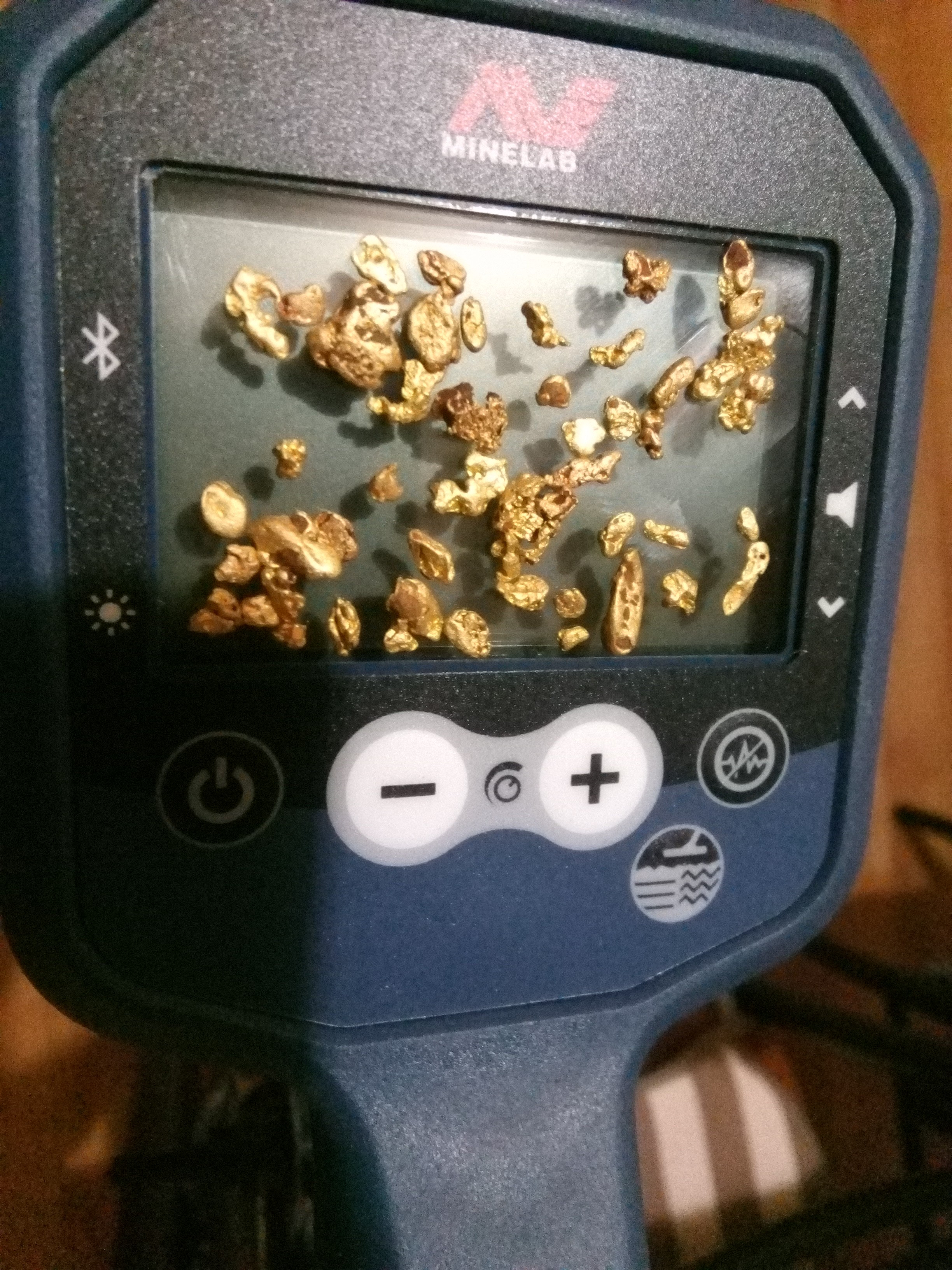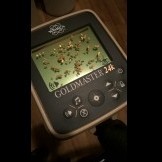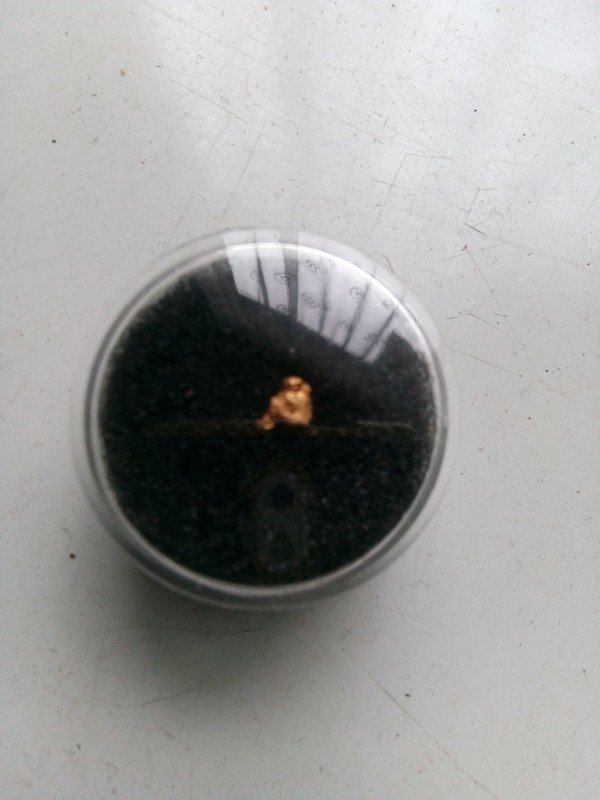-
Posts
1,055 -
Joined
-
Last visited
Content Type
Forums
Detector Prospector Home
Detector Database
Downloads
Posts posted by Aureous
-
-
1 hour ago, rasheede11 said:
Thank you for this information. If it is not useful to me, it may help others. I appreciate your advice
But all cables and connections have been changed and made sure that they are intact
Thank you againThese cables are INTERNAL as I said....not visible unless you open up the control box. Even then, its always not obvious that there is a breakage in the ribbon cable. A technician will need to inspect and test.
-
Various internal ribbon cables can fail and leave odd audio symptoms. I had my 4500 fail this way and got Mick at Detectronics to repair it. The audio became very faint with a hissing crackle. The replaced ribbon cable fixed it.
-
Reg knows this area well and has found gold in adjoining public land.... being geologically wise, he knows full well which direction the gold was headed. Experience pays off 👍☺️
-
Good to know the bigguns are still being heard at depth with the 6000! 😲
-
51 minutes ago, phrunt said:
So yea, his 9 bits make my one chicken drum stick look pretty bad, but It was just nice to get out there looking for gold again after hanging around home for weeks on end with my broken foot.
Hope ya heal up quickly and you're back on the yella soon mate 👍
-
-
Lithium does not occur as a native metal, therefore it will never be found with a metal detector.... unless you count dead batteries as a 'resource' 😉
-
40 minutes ago, BMc said:
Issues with the GPX-6000. "The reality is there are issues with many companies and products right now. I would expect this to go on for another 6 months"
I am wondering if there has been any noticeable change for the better regarding the aforementioned quality control issues of the GPX-6000?
Thanks!
I'll be in a position in a week or two, to provide a fresh-start view on the 6000's reliability when I pick mine up. I will give mine an instant run for a few hours prior to taking it home, just in case its a 'dud', I can take it straight back to the dealer. Fingers crossed!
-
6 hours ago, inthemountains said:
It would be great for Nugget finder or someone to make a simple adapter for existing coils such as all the nugget finder coils out there to be used on the 6000.
The 6000 coils are all chip-locked and the only source for the code on the chips is Minelab themselves. No hope of ever seeing any adapters.... Unless you butcher a coil, extract the chip and get yourself an adapter made. Just like the Russkies did.
-
1 hour ago, jasong said:
My friend just had to send his 11" 6000 coil in due to extreme touch sensitivity developing. On my last trip out I too started to notice it happening to my 11" too, but not so bad I can't use it.
Not sure if outlier cases or what, haven't seen any other people post about it happening to them.
sometimes, less-than-ideal quality coax is used by manufacturers where the individual strands break inside the sheath near the inlet, creating touchy noises....these increase until it becomes utterly unstable and unusable. As a test, leave the 1st few inches of coax in a loop and then heavily tape the next few inches onto the lower stem. Then start tapping the coil and rubbing your hand up and down the stem, see if that upsets the audio or stays stable. If its within the coil itself and not the coax cable, then its a manufacturing fault.
-
Coils become touch sensitive and mineralization/EMI sensitive over time almost precisely to what JP said... both the shielding and screen wire becomes brittle and wears thin just from vibration. Heat tends to shrink the foam formers also, leading to cracks which in turn, breaks the shielding.
-
18 hours ago, VicR said:
Well i was ready to jump in and get the small Coiltek mono - now i will have to wait and see what Nugget Finder has to offer before making a decision.
12x7, 8x6 and 15x10, all mono's for now. Methinks the 8x6 and the 12x7 will be in big demand....
-
On 4/14/2022 at 12:47 PM, phrunt said:
I wonder if the anti interference figure 8 style coils like Coiltek made for the GPX 4500/5000 would be possible for the GPX 6000? That'd be awesome if they could be made.
The std AI coils made by Coiltek were all modified DD's. Twin windings.... but if the overlapped DD's as made by ML (the supplied 14") were to be copied in other sizes (smaller, say like the original Platypus size DD's) then it would be extremely useful, I agree! I'd get one for sure!
-
11 hours ago, phrunt said:
It's a lot harder to make though and NF coils are hand made.
All coils are hand made. Hand wound, hand potted, hand shielded, hand sealed, hand tested lol. Only machines involved would be the vacuum former (if the shells are made on-site), the wire-winder, the shielding spray gun and the shell sealer (if a heat one is used). Even the Korean made Commander coils were all made by hand.
The mono coils are waay easier to make than the DOD coils to suit the GPZ, simply a chip added to the potting connection area with 2 soldered inputs. Manufactured the same as all the other flat-wound monos.
-
Logic dictates that if the metal isnt oxidizable or bonded with chlorine or Carbon, then there will be NO metallic residue in the surrounding soil to amplify the target size. The known fact that the metal in question (gold), or even the minor alloys within that metal are NOT detectable even in ppb assays in the immediate soil kills the whole argument. The actual real discussion needs to be about the possible halo effect with copper, bronze, silver, iron etc.
-
11 hours ago, VicR said:
Just received Coiltek email.
"Want to unearth more gold with your Minelab GPX 6000? The wait is almost over!
Three new sizes will be available - 10x5", 14x9" and 9" and your local authorised Coiltek dealer is now accepting pre-orders so get in quick to avoid delays!
Stay tuned for more information on when these super-sensitive and highly anticipated coils will be available. "So looks like you can pre-order them in Australia.
Wonder why they stuck with white for these coils? - is there a technical reason? Less heat build up inside the coil?
Vic, I havent seen any pics of the coils yet....how do you know they are white? Did Ian tell you? As I said a few months ago, one of the coils is a 9" Elite version and the 14x9 is a logical step (same as the 14x9E) in the same lineup. But, the 10x5 Joey size is an interesting surprise! Hopefully they have learnt from the ML coil design on keeping them lightweight. And, no....there's no reason for a white color for heat dissipation, any color other than black will function equally as good.
-
2 hours ago, VicR said:
Looks like Nugget Finder will have a coil for the 6000 as well. Only information at the moment is the attached picture. Wonder if it will be a Minelab approved accessory?
Yes, ML are supplying Rohan and Co with the code-lock chips too now, a break from previous policy. Looks like the 1st Xceed coil will be a Sadie. Hopefully an ellip smaller DD will be next.
-
13 hours ago, Jonathan Porter said:
Halo effect is VERY probable and acknowledged by metal detector developers who I associate with, when a nugget has been in-situ for a very long time any oxidisable metals such as silver and copper can weather out into the surrounding soils over time. This halo then presents to the detector a much larger target than the actual original seed nugget and goes a long way to explaining why a nugget can be sensed at far greater depths that an in air test can achieve.
Having worked in the mining industry for over 35 years and working with several metallurgists and geologists (incl 2 professors), they all told me that it isn't likely at all. The tiny amount of locked up copper and silver within nuggets doesnt display in any amount worthy of note in the surrounding soil even with XRF. I think its an old wives tale lol. But you are spot on with the ground chemistry statement, its far more tricky and specific than we realize. This will have a far greater impact on signal quality, especially when disturbed. A great many clays contain various aluminium minerals such as diaspore that unknowingly react to and reflect EM fields. Sodium is also a problem as anyone detecting salt lakes or flats will understand. That we can use metal detectors to find such small gold at all is a modern miracle!
-
Ive had mine for years now and the original seller I got mine from is no longer there....looks the same as that (except orange) and matches the depth and controls of a TRX I tested it against. I was very impressed and remain so. Doesn't react to mineralized ground and all control options have run perfect for 3 years without fault....something I can't say for 2x Garrett PP's and a ML pro pointer that Ive owned.
-
TRX PP copy Use that link. 👍
-
On 4/10/2022 at 7:48 AM, F350Platinum said:
Wish I could get my hands on a White's Bullseye TRX, but I'm good for now.
Now that Whites are defunct, the Chinese make a good copy of the TRX, I have one and its the best PP I've ever owned. Dodgy battery compartment (needs cardboard insert) but once its running, its equally as good as the original. My PI detectors hate it but once I switch over the cancel mode, its fine. My T2 and the Nox800 are quite OK with it.
-
Replacements are well overdue for the GPZ, the CTX and the Excal 2. The 1st two I know for sure are currently under development. Release dates are wholly dependent on the detectors reaching the design parameters for performance. Various component shortages have created problems too.
-
7 hours ago, GB_Amateur said:
Will you go a bit more into detail about this? I don't recall hearing it described this way, but maybe it was and I just didn't understand it. Also, you specify 'PI detectors' -- does that imply the surrounding soil affects an IB/VLF signal differently?
PI detectors find metal by energizing the target with a pulsed magnetic field and the counter-magnetic field is then detected via remnant eddy currents. The mineralization contained within the surrounding soil will deflect or hinder the eddy currents to a varying degree, depending on the amount/type of mineralization present. Because the pulse train of Transmit (Tx) and receive (Rx) pulses and sampling use 'time' as the primary means of sampling, this allows the mineralization portion of the signal to dissipate, leaving the ACTUAL counter magnetic field (remnant eddy currents) remaining. This is where all the minute details matter....the way the code for the pulse train is written (distances between pulses, voltages, sampling speed etc etc) all have an affect on how the mineralization affects the end, audible result. In IB/VLF, there is no time parameter for the ground signal to dissipate because its 'constant wave', only relying on the frequency of the oscillator to reduce mineralization and sensitivity. Hope that helps a little....a lot of it is beyond me as well as my level of electronics isn't within the engineering spectrum, only technical.
-
If any metal detected isn't bondable with oxygen, carbon or chlorine, it will never create a 'halo' within the surrounding soil. Gold is not one of these and a piece of it will never affect the soil its contained within. But, because PI detectors actually detect the eddy currents surrounding a metal object and not the object itself, the surrounding soil has an affect on the signal quality, depending on the depth, size and shape of the detected metal object. Once the soil is disturbed by digging, the whole original, static situation at which the signal was obtained, is now dissimilar and altered. This is the actual issue on why apparently 'good' signals can disappear once dug. There are so many potential 'detection holes' in a PI's pulse train/code that this type of difficulty with signal 'vagueness' is a distinct possibility with small or flat gold shapes also.




My New GPX 6000 Is Faulty, Straight Out Of The Box
in Minelab Metal Detectors
Posted
Well....that makes me nervous! I'm picking up my GPX6000 on Monday {biting fingernails}.... I've requested that the dealer charge up the batteries so I can test it for the whole day once picked up. I also asked the dealer to test it prior to me arriving. Its a 2 hour drive and I don't wanna go home without it...if I have to hand it back for warranty repair/replacement, I'm gonna be as pissed as you Simon!